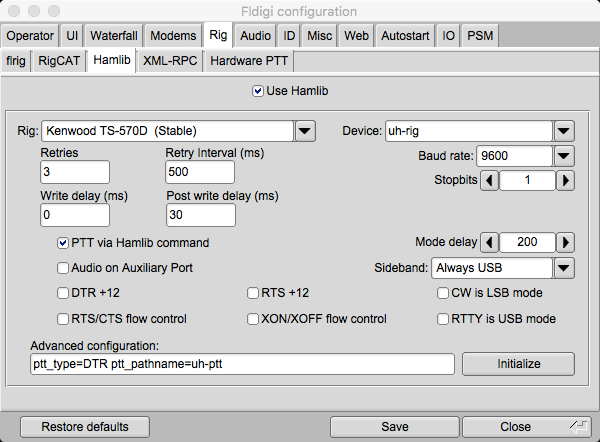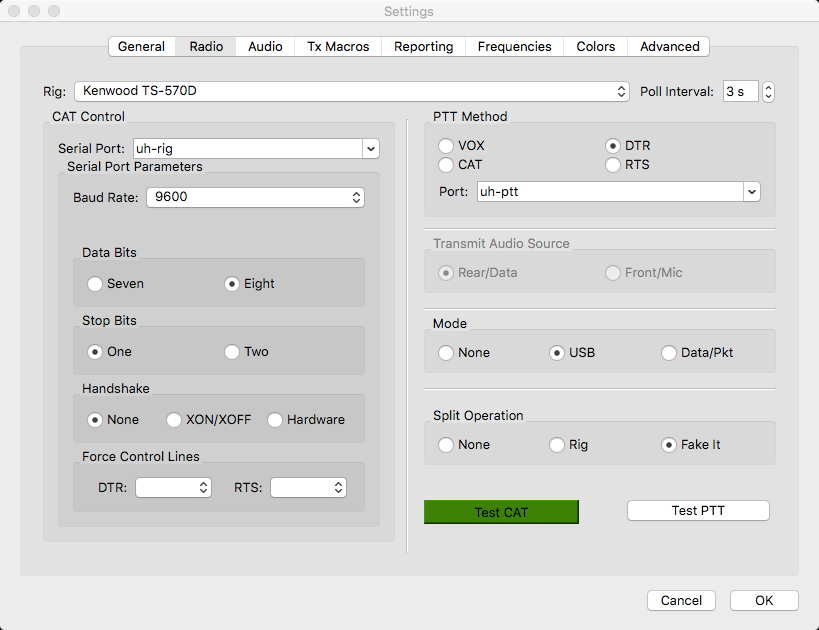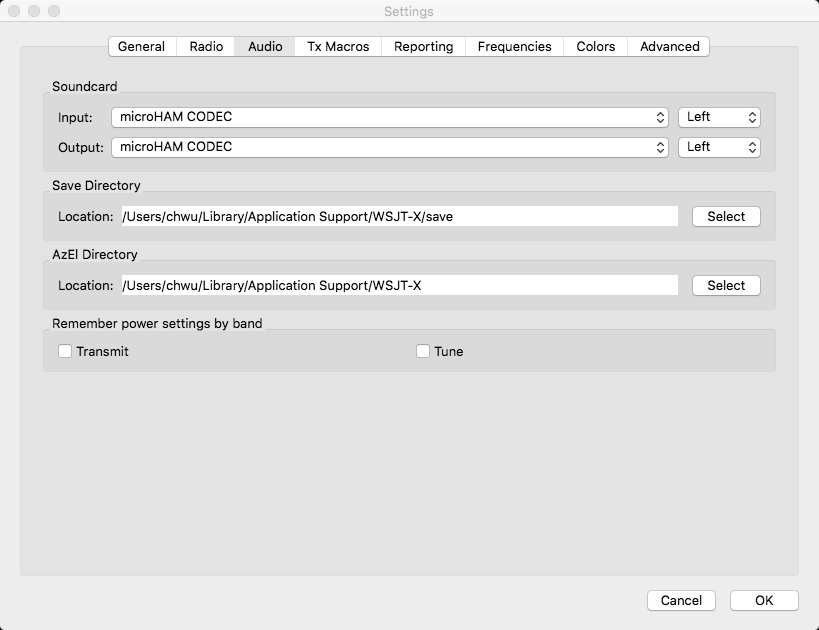
We have to select the rig (here, Kenwood TS 570d), and "uh-rig" as the serial port. Then hamlib as compiled into fldigi will automatically communicate with the microHam device. The baud rate has to be specified as set up in the rig.
Important is the text in "Advanced configuration": this tells hamlib to use hardware PTT (DTR line) on the serial port "uh-ptt". This will then automatically converted by hamlib to the appropriate command for the DigiKeyer.
Note that the DigiKeyer cannot use RTS/CTS flow control (these lines are physically missing in the Keyer--TRX connection).
At the moment, this does not work with a plain vanilla fldigi binary downloaded from the internet, since this is not linked with the most recent version of hamlib. I have compiled an (unmodified) fldigi source code and linked it with the most recent hamlib version and obtained a working version.
If you cannot do this, you have to wait until hamlib version 3.2 is fully released and fldigi is linked with this.

Choosing "DTR" for PTT method and "uh-ptt" for the PTT port generates exactly the configuration string we had to type into the "Advances configuration" field in fldigi.
Note that with both programs, you can also use true serial ports with names "dev/tty.something". Any serial port with a name different from uh-rig or uh-ptt will be normally processed by hamlib.

